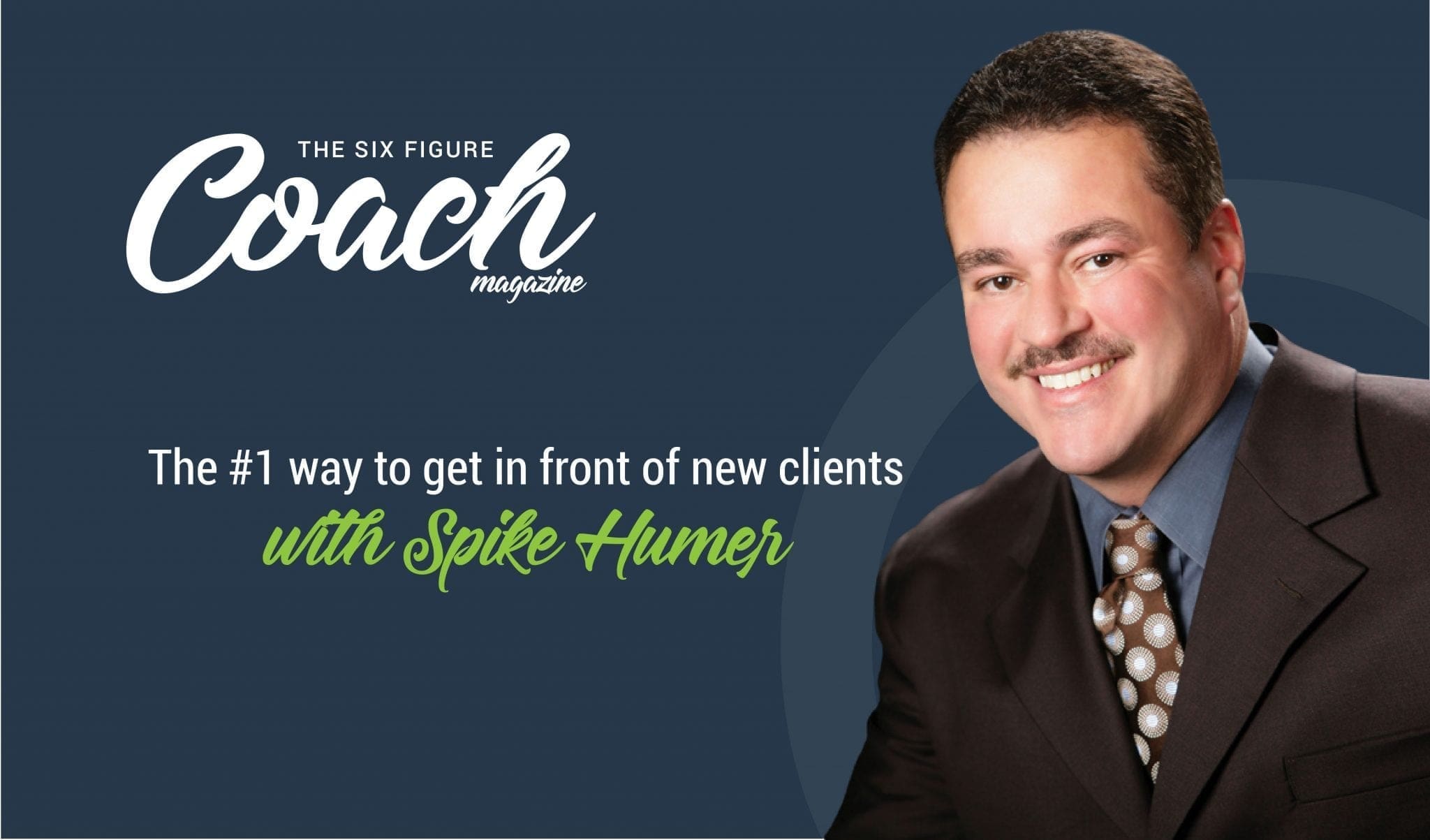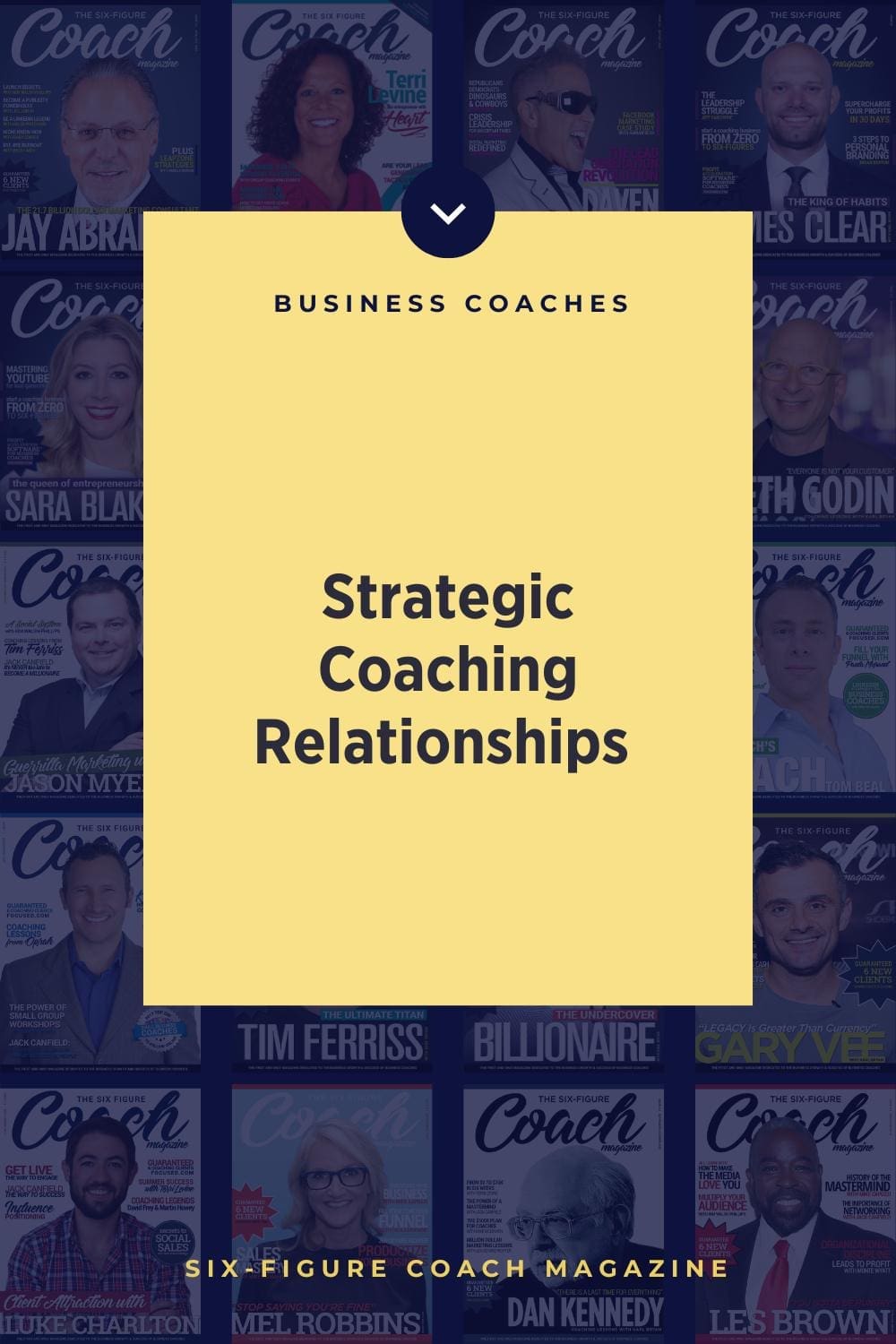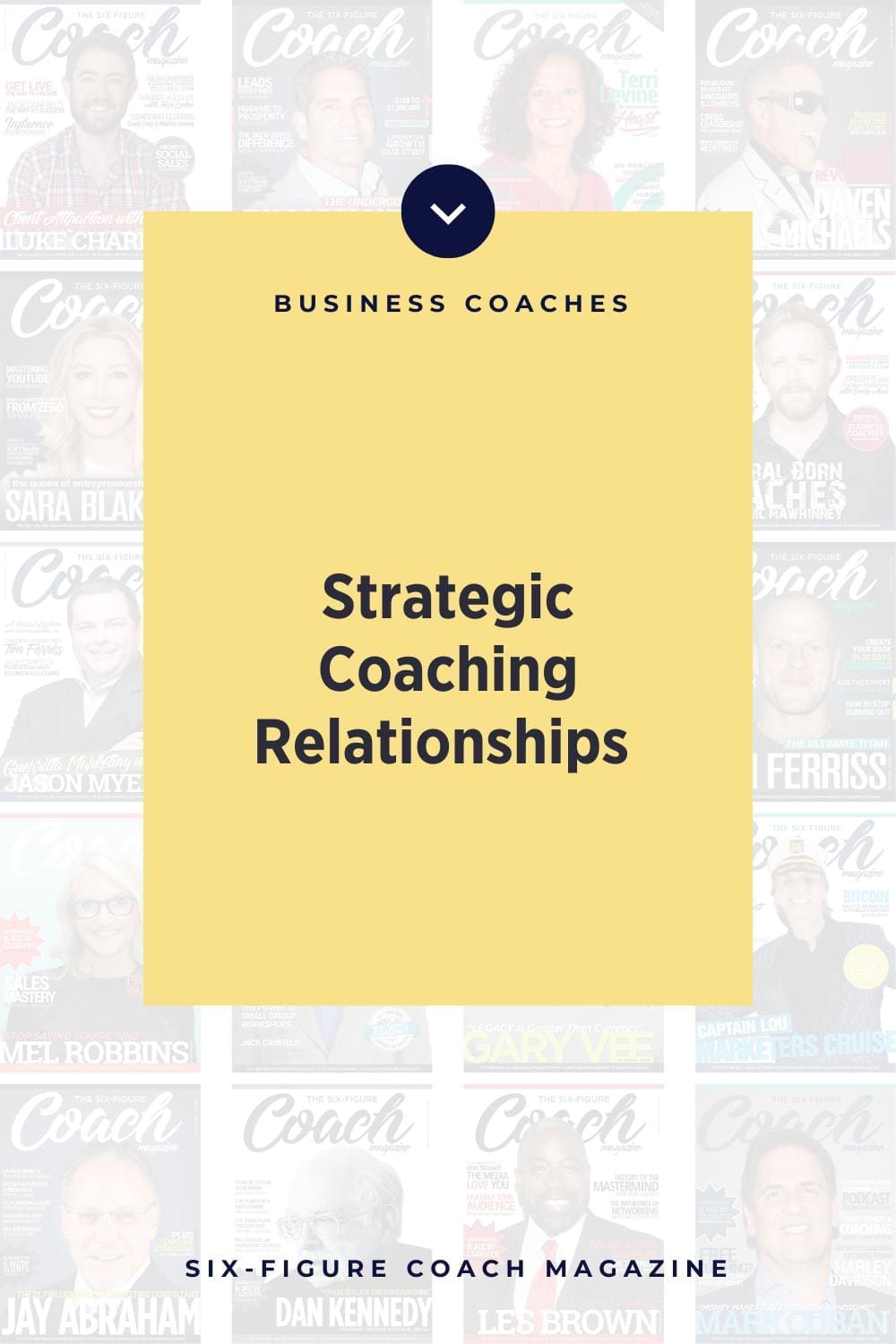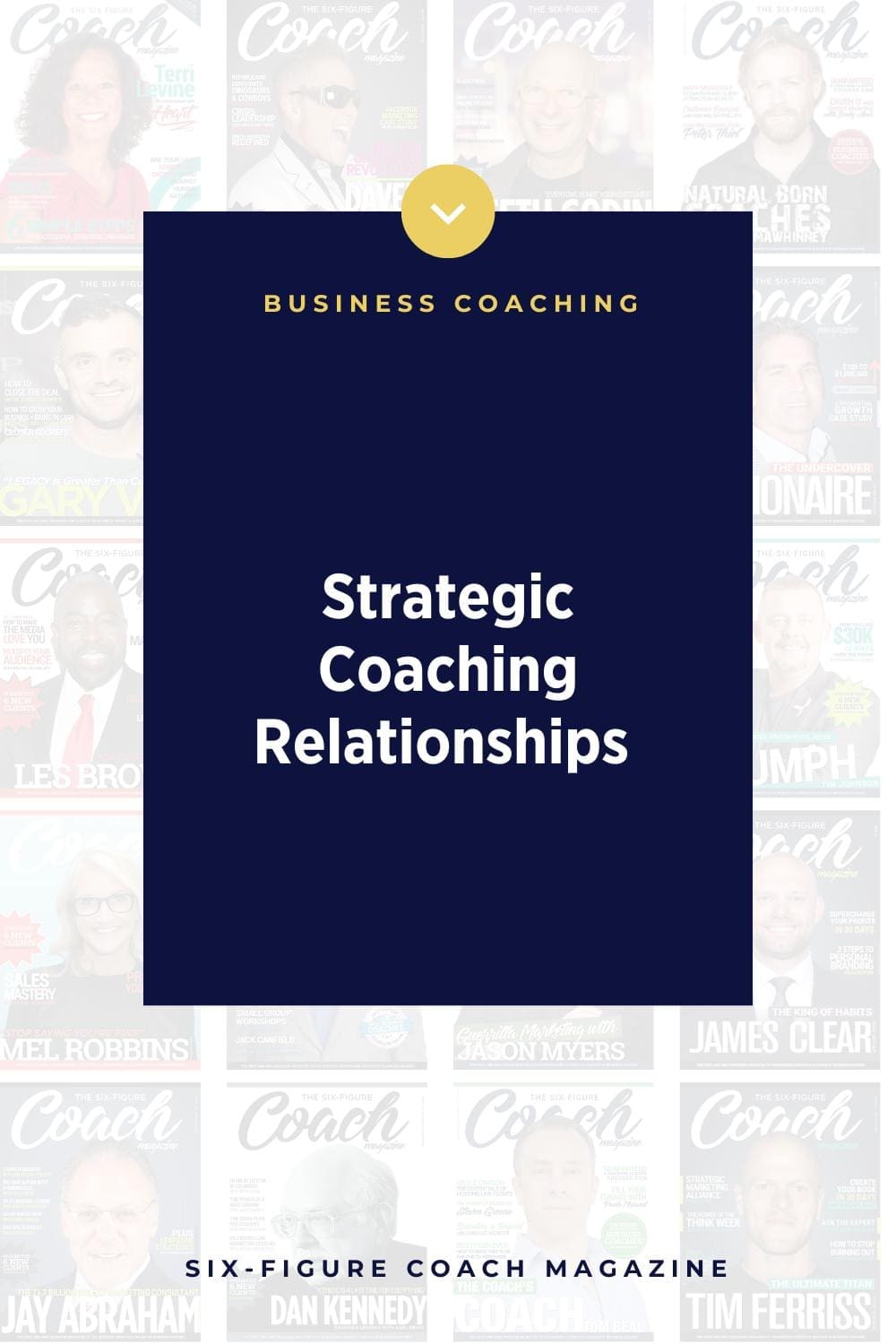Strategic Coaching Relationships with Spike Humer
As a business owner and a coach, you understand the need for sales. New clients are an essential element to help build your business and boost your bottom line.
If you’re just starting out, getting a critical concentration of cash-paying clients is vital to your success. Until we build a base of people to work with, it’s hard to think about what it is we do best—help other people growth their business and boost their bottom line.
If you’re an established coach or consultant with a great base of business; congratulations. The good news is you made it. The bad news is it doesn’t last forever.
Sooner or later, every coach, consultant, and virtually any other business of profession has to focus on bringing in more business. The reality is that highly successful coaches spend more time finding potential prospects and bringing in new sales than any other activity. It’s time-consuming, resource-expensive, and often results-uncertain.
For any business to succeed and excel it has to be able to leverage its assets and resources. For you as a coach, time is a major constraint to applying your talent, experience and using the tools available to you to get the results with your clients they expect and deserve. Of course, things like networking, advertising, and personal connections help create visibility for us and our work. Referral systems and programs help speed up the process. But the best way to build most businesses, including yours, is a joint venture.
Strategic alliances, host-beneficiary relationships, cross-promotions, product and service bundling, and even formalized referral systems all fall under the umbrella-term of “joint ventures.” Any time two or more parties come together specifically to generate results for mutual benefit through transacting with one or more additional parties, it’s a “joint venture.” Bottom line – don’t get hung up on the terminology or definition. It’s much simpler than that. Joint ventures are a strategy and joint venturing is a verb that involves a few systematic, tactical steps.
Here’s how to get the strategy rolling in six easy steps:
- First, clearly define your market and your prospects. “Businesses are my target,” you say? Get more specific. You probably don’t coach Bill Gates, Warren Buffet, Howard Shultz, or people like that. So your target is probably smaller companies and less prominent people.What sized business do you coach or intend to coach? Owner-operated? What industry or industries? Geography? Target market? Product? Service? Other? The better you can define and describe the businesses you’re trying to reach the more effective you can be in your marketing – but this is especially true when formulating joint ventures.
- Second, think about who else does business with, markets to communicates with, has access to, has credibility with or has the ability to reach the people you want to coach. An industry expert? Blogger? Website? Advisor? Perhaps a professional service provider like a CPA, attorney, service or supply vendor? Commercial Real Estate broker? Maintenance service? Tech support? An organization like the Chambers of Commerce? Make a broad and deep list. You can list individuals if you know them or know of them – professions or industries if you don’t. What other people or companies do you think might be doing business with your prospects already? Most people only do or will continue to do business with people, products, and companies they know or trust. What we’re trying to do here is to figure out how we can ethically engage the trust of others to help speed up the process of doing business with more people faster.
- Next, continue to expand your list by thinking of all of the other products and services your prospective clients use in business AND in life. Why? We don’t do business with businesses. We do business with people and those people do business with other people – and they know people on a personal level. What products or services do your prospective clients use before, during, or after they engage a business coach? Who else do they know, reach out to, turn to for advice or trust? It’s okay if you have some overlap on the list you made from above. We’re looking for critical mass and core concentrations here.What products or services do your prospective clients use before, during, or after they engage a business coach? Who else do they know, reach out to, turn to for advice or trust? It’s okay if you have some overlap on the list you made from above. We’re looking for critical mass and core concentrations here.
For instance, people who are looking for a bookkeeper, copywriter, ad buyer, merchant service provider or graphic designer generally are starting a business, have an established business, or are looking to grow their business. People who are engaging a business coach are often looking to hire new people, either because they’re growing or because they’re replacing staff so they might be using a staffing agency. Business owners need you and the people who are already supporting these business owners to know the decision-makers, what they do, know what the business most needs and just as importantly, have the trust of the business they’re trying to reach.
- Now, as you think about anyone and everyone who already has access to the people you want to reach, keep making your list. But we’re not stopping there. Expand your list to other non-competitive product or service providers who would also like to reach these people but haven’t. The reason? Marketing can be an expensive upfront cost.What if you could find someone who is already marketing to, or would like to market to the same protective businesses as you? Maybe you can share the advertising cost. Perhaps you could bundle your products together. You might be able to offer incentives, discounts, or value-adds if a prospect buys your coaching services at the same time they engage a merchant service provider, CPA, professional copywriter, graphic designer, printer, web designer, etc.
- Here’s where it gets fun. You have a long list. You have lots of ideas. You have tons of opportunities. What’s next? Well, just like in everything, we need to look for high-probability as well as big-leverage outcomes in our actions and opportunities. As you look at your list, think about who you KNOW or who you have access to who has the ability to work with you. It could be in the form of an introduction to the prospects you’re trying to reach. It could be an endorsement. It could be a direct offer as a referral partner, affiliate, or as a co-marketing collaborator. People you know or already do business with are always best.Next best is the people you have some way to reach. Do you know someone who could introduce you? Do you have their email address? Do they have an online presence where you can connect and communicate? The more vehicles for communication and methods of contact the better.
- It’s important to keep in mind we are all self-interested creatures. No matter how “nice” a person is, people won’t generally do something for nothing – and certainly not against their self-interests. People value their time, their relationships, their reputation, and the attention currency they have with their market, prospects, clients, customers, and colleagues. The final step in the strategy formulation is to figure out how to motivate our potential partners with upside and protect them from the downside. We can incentivize JV partners with fee-engagements, referral fees, revenue shares, profit participation, reciprocal referrals, and cross promotions.We can protect their downside by offering to do a small sample test, offer risk-reversal or money back guarantees, and providing results info from previous joint ventures. We can help validate our credibility with endorsements, testimonials, professional and personal references for people who don’t already know us and others who do but want more assurance.
I’ve literally done hundreds of “JV Deals” for my clients and myself. I’ve advised, trained, guided, or collaborated with companies and individuals all over the world. In my opinion, joint ventures are one of, if not the most powerful strategy, tool, and technique I know to grow almost any business. An open mind, creative consideration, and thoughtful preparation are keys to success.
In the next installment, we’ll drill deeper into these steps and explore the best tactics to implement your joint venture strategies, measure your success, and leverage even more opportunities

About Spike Humer
Spike Humer is widely-recognized as a thought-leader and world-renowned expert in leading and inspiring companies, organizations, and individuals to achieve more, have more, and be more. He’s been called the “mentor’s mentor” and is highly regarded as a master marketing strategist and performance acceleration expert. Spike serves as a trusted advisor and performance consultant to entrepreneurs and individuals from virtually every walk-of-life and in countless industries.







